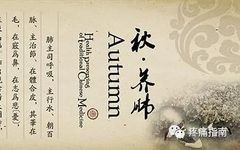
Click↑ Follow us in blue!
The normal metabolism of body fluids is a fundamental condition for maintaining the relative balance between the generation, distribution, and excretion of body fluids.
Abnormal metabolism of body fluids refers to the disruption of the distribution of body fluids, leading to an imbalance between the generation and excretion of body fluids, resulting in insufficient generation of body fluids, or abnormal distribution and excretion, causing slow circulation of body fluids within the body, leading to pathological changes such as fluid retention, stagnation, and overflow.
The metabolism of body fluids is a complex physiological process that relies on the coordination of various physiological functions of multiple organs to maintain normal metabolic balance, particularly closely related to the lungs, spleen, and kidneys. Therefore, any abnormality in any organ or physiological function, such as the lungs, spleen, or kidneys, can lead to abnormal metabolism of body fluids, resulting in insufficient body fluids or retention of body fluids, thereby generating internal dampness or phlegm.

(1) Insufficient Body Fluids

Insufficient body fluids refer to a deficiency in the quantity of body fluids, leading to the internal organs, external orifices, and skin losing their nourishing and moistening functions, resulting in a series of pathological changes characterized by dryness. Insufficient body fluids are often caused by pathogenic heat or the fire of the five emotions, or by high fever, excessive sweating, vomiting, diarrhea, excessive urination, blood loss, or overuse of pungent and drying agents, leading to the consumption of body fluids.
The pathological changes of insufficient body fluids vary depending on the degree of fluid deficiency, which can be classified into damage to body fluids and damage to yin. Body fluids (津, jin) and liquids (液, ye) differ in properties, distribution, and physiological functions, thus the pathogenesis and clinical manifestations of insufficient body fluids also exhibit certain differences. Jin is relatively clear and thin, flows more freely, fills the blood vessels, moistens the organs, and reaches the skin and orifices externally, making it easy to dissipate and replenish. For example, excessive sweating in hot summer, or thirst due to high fever; during dry seasons, dryness of the mouth, nose, and skin is common; during severe vomiting, diarrhea, or excessive urination, symptoms such as sunken eyes and thin skin may appear, which are primarily manifestations of damage to body fluids. Ye is thicker and flows less freely, primarily nourishing the organs, filling the bone marrow, brain, and spinal cord, and lubricating the joints, generally not easily depleted, but once depleted, it is also not easily replenished. For instance, in the late stages of febrile diseases or chronic illnesses damaging yin, one may observe a red tongue with little or no coating, dry lips and tongue without thirst, emaciation, and dry skin and hair, even leading to muscle spasms and tremors, which are manifestations of depleted yin fluids and movement of wind.
Although damage to body fluids and loss of liquids differ in pathogenesis and clinical manifestations, body fluids are fundamentally one entity, and the two influence each other pathologically. Generally speaking, mild cases are classified as damage to body fluids, while severe cases are classified as damage to yin. Damage to body fluids does not necessarily imply damage to yin, but damage to yin must accompany damage to body fluids, hence damage to body fluids is a gradual process leading to damage to yin, while damage to yin is a severe depletion of body fluids.
Since body fluids and blood share a common source, deficiency or depletion of body fluids inevitably leads to deficiency of yin and blood, resulting in pathological changes such as internal heat due to dry blood or wind generated from dry blood. If body fluids are consumed, leading to reduced blood volume and stagnation of blood flow, this can result in blood stasis.
Qi and body fluids are mutually dependent and interrelated. The metabolism of body fluids relies on the ascending and descending movements of qi; qi has the functions of solidifying and transforming, which can control and regulate the generation and excretion of body fluids. Qi also depends on body fluids for its existence; for instance, if a large amount of body fluids is lost, qi loses its support, leading to a critical state of qi and body fluids being lost together.
(2) Accumulation of Dampness

The distribution and excretion of body fluids are two important aspects of body fluid metabolism. Although the dysfunction of body fluid distribution and excretion differs, both can lead to abnormal stagnation of body fluids within the body, which is the fundamental cause of the internal generation of dampness and phlegm.
Disruption of body fluid distribution refers to the inability of body fluids to be distributed normally, leading to slow circulation of body fluids within the body or retention in a specific area, resulting in the failure of body fluids to transform, and the internal generation of dampness, which leads to pathological changes such as phlegm. There are many causes of disruption in body fluid distribution, involving the lung’s function of dispersing and descending, the spleen’s function of transformation and transportation, the liver’s function of regulating and directing, and the patency of the water pathways of the San Jiao (Triple Burner), but the primary cause is the dysfunction of the spleen’s transformation and transportation.
Disruption of body fluid excretion mainly refers to the reduced function of transforming body fluids into sweat and urine, leading to fluid retention and a pathological change of edema. The transformation of body fluids into sweat is primarily the function of the lung, while the transformation into urine is mainly the function of the kidney. Weakness in the functions of the lungs and kidneys can lead to fluid retention and edema, but the kidney’s function of transforming and excreting is crucial for excretion.
Although disruption of body fluid distribution and excretion are different, they often influence each other and are mutually causal, resulting in the internal generation of dampness and phlegm, leading to various pathological changes.
In summary, the accumulation of dampness primarily leads to pathological changes such as damp turbidity obstructing, phlegm and fluid accumulation, and fluid retention.
1. Damp turbidity obstruction: Damp turbidity obstruction primarily involves the spleen’s inability to transport dampness. Dampness as a disease is often insidious and difficult to detect. It can manifest as swelling and coldness, or stiffness in the lower back, heaviness in the head, or limb heaviness, leading to sores and ulcers. Dampness is persistent and can cause various diseases such as generalized pain, edema, and weakness. Internally, it can cause qi stagnation, leading to distension and fullness, or various diseases due to dampness and phlegm.
2. Phlegm and fluid accumulation: Phlegm and fluid are pathological products formed due to dysfunction of the organs and disruption of body fluid metabolism, leading to the accumulation of dampness and phlegm, which are causative factors for various diseases, resulting in complex pathological changes.
3. Fluid retention: Fluid retention is often caused by dysfunction of the lungs, spleen, and kidneys, leading to disruption of fluid metabolism and resulting in fluid retention in the body, manifesting as edema. If fluid overflows to the skin, it can cause swelling of the face, eyelids, and limbs, and in severe cases, generalized edema. If dampness accumulates in the abdominal cavity, it can lead to abdominal distension and ascites.
Qi can transform water; if water stagnates, qi is obstructed. Disruption of body fluid metabolism, retention of dampness and phlegm can lead to pathological changes of qi stagnation: for example, if phlegm obstructs the lungs, lung qi becomes stagnant, leading to symptoms such as chest fullness, cough, and difficulty lying flat; if phlegm obstructs the heart, it can impede heart qi, leading to palpitations and chest pain; if phlegm stagnates in the middle jiao (the central region of the body), it can obstruct the spleen and stomach qi, causing failure of clear qi to rise and turbid qi to descend, leading to dizziness, fatigue, abdominal distension, poor appetite, and nausea; if phlegm stagnates in the limbs, it can obstruct the flow of qi and blood, resulting in heaviness and pain in the limbs.
(3) Imbalance in the Relationship between Body Fluids, Qi, and Blood

The imbalance in the relationship between body fluids, qi, and blood is commonly observed clinically, primarily manifesting as water stagnation and qi obstruction, qi following fluid loss, dryness of body fluids and blood, and deficiency of body fluids and blood stasis.
1. Water stagnation and qi obstruction: Water stagnation and qi obstruction refer to the pathological changes caused by the accumulation of water and fluids in the body, leading to qi stagnation. The generation, distribution, and excretion of body fluids depend on the ascending and descending movements of the organ qi; when qi moves, water moves. If the transformation of body fluids is abnormal, it leads to the accumulation of dampness and phlegm, which obstructs the movement of qi. For instance, if phlegm obstructs the lungs, lung qi becomes stagnant, leading to symptoms such as chest fullness, cough, and difficulty lying flat; if phlegm obstructs the heart, it can impede heart qi, leading to palpitations and chest pain; if phlegm stagnates in the middle jiao, it can obstruct the spleen and stomach qi, causing failure of clear qi to rise and turbid qi to descend, leading to dizziness, fatigue, abdominal distension, poor appetite, and nausea; if phlegm stagnates in the limbs, it can obstruct the flow of qi and blood, resulting in heaviness and pain in the limbs.
2. Qi following fluid loss: Qi following fluid loss refers to the pathological changes caused by the significant loss of body fluids, leading to the loss of qi as it loses its support and results in a critical state of both qi and body fluids being lost. This often occurs due to excessive sweating or severe vomiting and diarrhea.
3. Dryness of body fluids and blood: Dryness of body fluids and blood refers to the deficiency or even depletion of body fluids, leading to the internal generation of dry heat or wind due to dry blood. Body fluids are an important component of blood, and both body fluids and blood originate from the essence of food and water. If body fluids are severely depleted due to high fever or burns, or if yin is deficient, it can lead to dryness of body fluids and blood, resulting in symptoms such as irritability, dryness of the nasal passages and throat, thirst, muscle wasting, scanty urination, a red tongue with little moisture, and a thin rapid pulse.
4. Deficiency of body fluids and blood stasis: Deficiency of body fluids and blood stasis refers to the pathological changes caused by the deficiency of body fluids and the poor circulation of blood. Adequate body fluids are essential for maintaining the fullness of blood vessels and the smooth flow of blood. If body fluids are significantly consumed due to high fever, burns, vomiting, or excessive sweating, it can lead to deficiency of body fluids and blood, resulting in stagnation of blood flow, which can manifest as purple or dark red tongue and the appearance of petechiae.
This article is sourced from the internet. If there is any infringement, please contact us for removal!
Your likes are our motivation for progress!
↘↘↘

